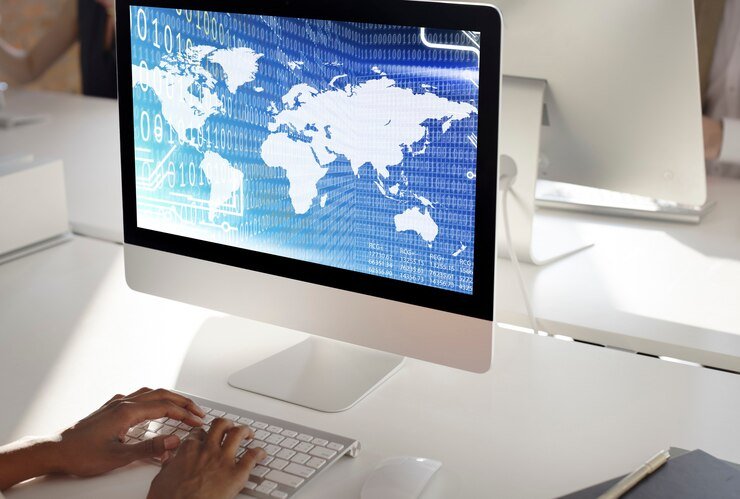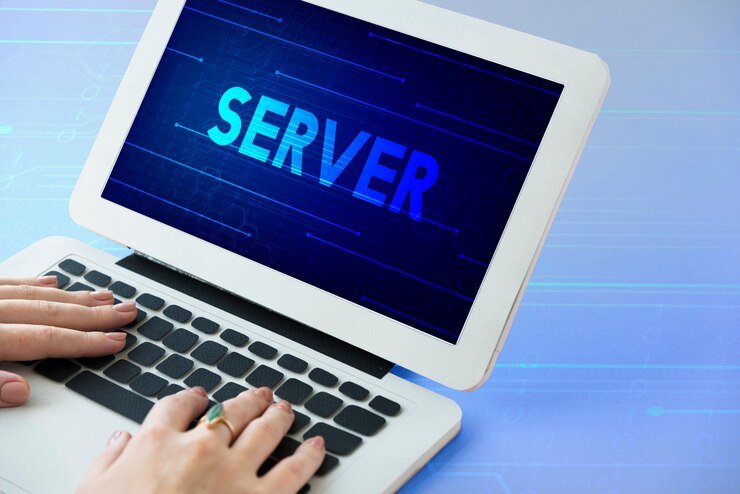
In today’s digital age, understanding your computer’s IP address is more important than ever. Whether you’re troubleshooting network issues, setting up a new device, or simply ensuring your privacy online, knowing how to locate your IP address can be incredibly useful. But what exactly is an IP address? And why should you care about it?
This guide will walk you through everything you need to know about locating your computer’s IP address with ease. By the time you’re done reading, you’ll feel confident navigating this essential aspect of internet connectivity. Ready to dive in and uncover the secrets of your tech world? Let’s get started! how to locate my ip address on my computer?
Understanding IP Addresses
IP addresses are like digital fingerprints for your devices. Each device connected to the internet has a unique address that identifies it in the vast online world. This numerical label enables communication between devices, helping data travel seamlessly from one point to another.
There are two main types of IP addresses: IPv4 and IPv6. The former consists of four sets of numbers separated by periods, while the latter includes eight groups of alphanumeric characters divided by colons. As our need for more connections grows, IPv6 is becoming increasingly important.
IP addresses can be static or dynamic. A static IP remains constant over time, making it ideal for servers and websites. On the other hand, a dynamic IP changes with each connection session, which is common in home networks and personal devices. Understanding these nuances helps you grasp how your computer interacts online efficiently.
What is an IP Address?
An IP address, or Internet Protocol address, serves as a unique identifier for devices on a network. Think of it as your computer’s home address in the vast digital landscape.
When you connect to the internet, your device is assigned an IP address that allows other computers and servers to locate and communicate with you. This process ensures data can be sent and received accurately.
IP addresses come in two main versions: IPv4 and IPv6. The former consists of four sets of numbers separated by periods, while the latter offers a more extensive set using colons. Each format plays a crucial role in routing information across networks.
Understanding what an IP address is opens doors to grasping how our devices interact online. It’s foundational knowledge for anyone navigating today’s connected world.
Types of IP Addresses
IP addresses come in several varieties, each serving a unique purpose. The two main types are IPv4 and IPv6.
IPv4 is the most commonly used format. It consists of four sets of numbers, ranging from 0 to 255, separated by periods (for example, 192.168.1.1). While it’s sufficient for many users today, the limited number of available addresses has led to some challenges.
IPv6 was introduced to solve these issues with an expansive address space. This format uses eight groups of hexadecimal numbers separated by colons (such as 2001:0db8:85a3:0000:0000:8a2e:0370:7334). It can accommodate billions more devices than IPv4.
Another distinction lies between public and private IP addresses. Public addresses allow your device to communicate over the internet while private ones are reserved for local networks only.
Dynamic IPs change frequently; static IPs remain constant until manually altered or reassigned.
How to Find Your Computer’s IP Address
how to locate my ip address on my computer is a straightforward process. Whether you’re using Windows or Mac, the steps are simple and quick.
On Windows, start by clicking on the Start menu. Type “cmd” into the search bar and hit Enter to open the Command Prompt. Once it’s up, type “ipconfig” and press Enter again. Look for an entry labeled “IPv4 Address.” That’s your IP address right there.
If you’re on a Mac, click the Apple icon in the top left corner of your screen. Select “System Preferences,” then click on “Network.” Choose your active network connection from the list on the left side. Your IP address will be displayed prominently within that window.
These methods should help you locate your device’s unique identifier effortlessly.
Reasons Why You May Need to Know Your IP Address
Knowing your IP address can be quite useful for various reasons. For starters, it’s essential for troubleshooting network issues. If your internet suddenly stops working, having access to this number helps in identifying problems with your connection.
Another key reason is online gaming. Many games require you to enter an IP address to connect with other players or servers smoothly. This ensures a seamless multiplayer experience.
If you’re setting up remote access on devices like printers or security cameras, you’ll need the specific IP address as well. It streamlines the process and boosts efficiency.
Privacy considerations also come into play. Understanding your IP can help you safeguard against potential vulnerabilities when using public Wi-Fi networks.
If you’re looking into geo-restricted content such as streaming services or websites, knowing how to mask your true IP allows greater flexibility while browsing online.
Why is Your Computer’s IP Address Important?
Your computer’s IP address is crucial for communication. It serves as a unique identifier, enabling devices to send and receive data on the internet. Without it, your computer would be like a letter without an address—lost in transit.
Additionally, your IP address helps websites track visits and improve user experience. Businesses use this information to tailor content and ads based on location, ensuring relevance.
Security is another important aspect. Knowing your IP allows you to set up firewalls or VPNs effectively. This protection safeguards personal data from unauthorized access.
Moreover, if you encounter connectivity issues or need technical support, identifying your IP can streamline troubleshooting processes with service providers. Understanding its significance fosters better management of online activities and privacy measures too.
How to Find Your Computer’s IP Address on Windows
Finding your computer’s IP address on Windows is straightforward. First, click on the Start menu. Then, type “cmd” to open the Command Prompt.
In the Command Prompt window, type “ipconfig” and press Enter. This command will display a range of network details.
Look for the line that says “IPv4 Address.” The number next to it—something like 192.168.1.1—is your local IP address.
Alternatively, you can go through settings by clicking the Start menu, selecting Settings, then Network & Internet and choosing either Wi-Fi or Ethernet based on your connection type.
Scroll down to find properties related to your current network connection where you’ll see your IPv4 address listed clearly.
This method enables you to quickly locate essential information without hassle or confusion.
How to Find Your Computer’s IP Address on Mac
how to locate my ip address on my computer on a Mac is quite straightforward. Start by clicking the Apple menu located in the top-left corner of your screen. From there, select “System Preferences.”
Next, look for “Network” and click on it. You’ll see a list of network connections on the left side. Choose the one that you’re currently using—this could be Wi-Fi or Ethernet.
Once selected, you’ll notice details displayed on the right side of the window. Your IP address will appear as either an IPv4 or IPv6 number depending on your connection type.
If you’re connected to Wi-Fi, it’s usually under “Status.” For wired connections, you’ll find it listed similarly. Just remember: this information can change whenever you reconnect to different networks!
Troubleshooting Common Issues with Finding Your IP Address
Finding your IP address can sometimes be a bit tricky. If you’re having trouble, there are a few common issues to consider.
First, ensure your device is connected to the internet. A lack of connectivity could mean you won’t see any IP information at all.
Next, check if you’re looking in the right settings menu. Depending on your operating system, locating an IP address can differ significantly between Windows and Mac.
If you still can’t locate it, try restarting your computer or router. This simple step can refresh network connections and often resolves minor glitches.
Make sure there aren’t any VPNs or firewalls active that might hide your true IP address from view. Disabling these temporarily may help reveal what you’re looking for.
Tips for Protecting Your IP Address and Privacy
Protecting your IP address is essential for maintaining online privacy. Start by using a Virtual Private Network (VPN). A VPN encrypts your internet connection and masks your real IP address, making it difficult for others to track you.
Regularly update your router’s firmware. Manufacturers often release updates that enhance security features, helping keep unwanted intruders at bay.
Consider enabling a firewall on both your computer and router. This adds an extra layer of defense against potential threats from the internet.
Be cautious when sharing personal information online. Limit what you post on social media platforms; this can help in minimizing risks associated with public exposure.
Utilize secure websites (look for “https” in URLs) whenever possible to ensure safer data transmission during browsing sessions. Keeping these tips in mind will significantly bolster your online privacy efforts.
Conclusion
Knowing how to locate your IP address on your computer is essential for various tasks, from troubleshooting connectivity issues to configuring network settings. Understanding the different types of IP addresses and their importance can empower you in managing your online presence.
Whether you’re using Windows or Mac, finding your IP address is a straightforward process that can be accomplished in just a few clicks. Additionally, being aware of common issues that may arise during this search helps streamline the experience.
Don’t forget about privacy; employing tips for protecting your IP address ensures safer browsing and enhances security against potential threats. By taking these precautions, you can enjoy a more secure online experience while maintaining control over your digital footprint.
Arming yourself with knowledge about locating and understanding how to locate my ip address on my computer opens up new possibilities for navigating the digital world confidently.
RELATED POSTS
View all


